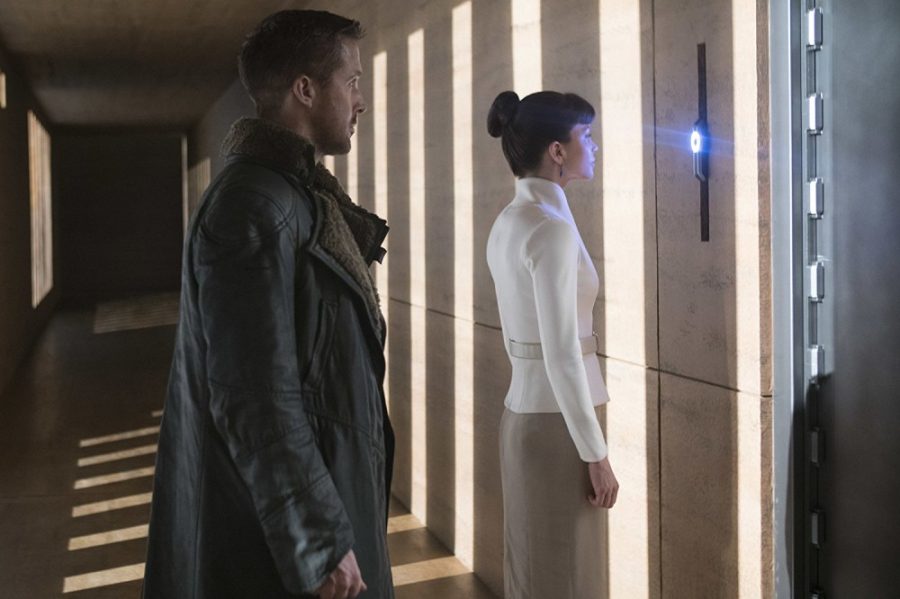Ridley Scott’s 1982 film “Blade Runner” was a dark, dystopian neo-noir movie full of challenging themes that helped it form a legacy as one of the greatest science fiction films of all time, while also further cementing Harrison Ford’s status as a great Hollywood leading man. Now, 35 years later, a sequel to this classic film has arrived in the form of Denis Villeneuve’s “Blade Runner 2049.”
The Blade Runner world revolves around synthetic human-like creatures called replicants that were designed to be used as slave labor. “Blade Runners” are police officers whose job is to hunt down and “retire” certain types of replicants, such as those that have decided to stop listening to those in charge of them or older replicant models that have now been deemed outdated. The line between human and replicant is ultimately blurred in these films, questioning exactly what it means to be human.
RELATED: “It” is a well-acted and appropriately creepy reminder of how terrifying clowns are
Ryan Gosling and Ford star in “Blade Runner 2049,” with Ford reprising his role from the original film. Gosling plays Officer K, a blade runner who is tasked with retiring older models of replicants that roam free.
While hunting down an old replicant, he comes across a set of female replicant remains, with further analysis showing that she was pregnant and died giving birth to a child. It was considered impossible for replicants to reproduce, so this could change everything. K is tasked with finding the child if it is still alive, as well as erasing any evidence of the child or its mother. Meanwhile, the powerful Wallace Corporation, which manufactures the replicants, discovers the remains and wants to find the child first in order to use it to build better replicants in the future, and they also decide to target Officer K.
Even though this is a sequel released over 30 years after the original, “Blade Runner 2049” gets everything right. It deepens and expands the world and the themes of its predecessor while also serving as an impressive film on its own merits. The film has a dystopian tone that feels very appropriate, effectively bringing the “Blade Runner” from last century into this one. A strong and complex script, an impressive direction from Villeneuve and mind-blowing cinematography from Roger Deakins help propel this film far past ordinary sequel status. The film is worth seeing for the camera work alone; the visuals are absolutely breathtaking.
The acting is mostly top-notch as well, with Ford and Gosling both giving great performances. It is always good to see Ford reprise a role he played years ago. First, he came back as Indiana Jones, then Han Solo made an appearance and now one of his slightly lesser-known characters returns to the screen with Rick Deckard, and it is great to have him back.
Gosling successfully steps in as the film’s leading man, and he gives a typically effective performance. There are plenty of classic Gosling shots of him simply staring at the camera as he ponders the meaning of life and questions whether he is a replicant or a human. He may occasionally stare blankly into space for slightly longer than necessary, but he’s Ryan Gosling, so he can get away with it. No other actor can say so much in saying so little.

This is definitely a film that takes itself seriously, maybe just a little too seriously at times. It works for the most part, but at the end of the day, it is only sci-fi. Still, a little bit more comic relief could have probably helped the film.
RELATED: Review: James Ponsoldt’s ‘The Circle’ fails in every way imaginable
Overall though, this is a film that hits all the right notes, delivering a riveting tale that works as both a standalone film and an expansion of the “Blade Runner” universe. Thanks to a strong narrative, tight direction, impressive acting and amazing cinematography, “Blade Runner 2049” is probably one of the best sequels ever to be released so long after the original.
Grade: A
Follow Alec Kuehnle on Twitter









